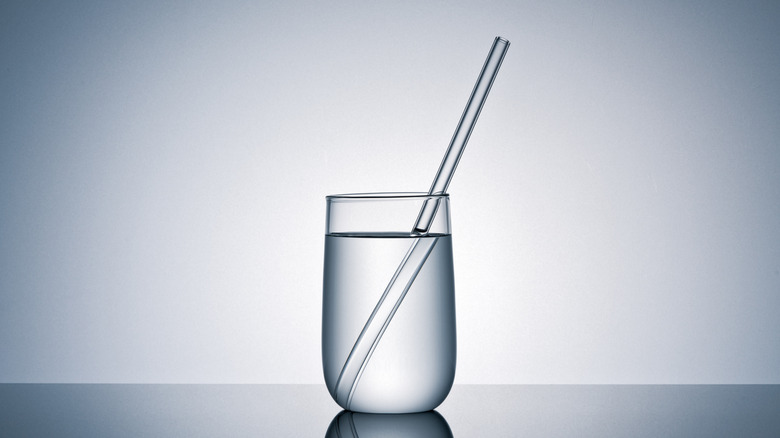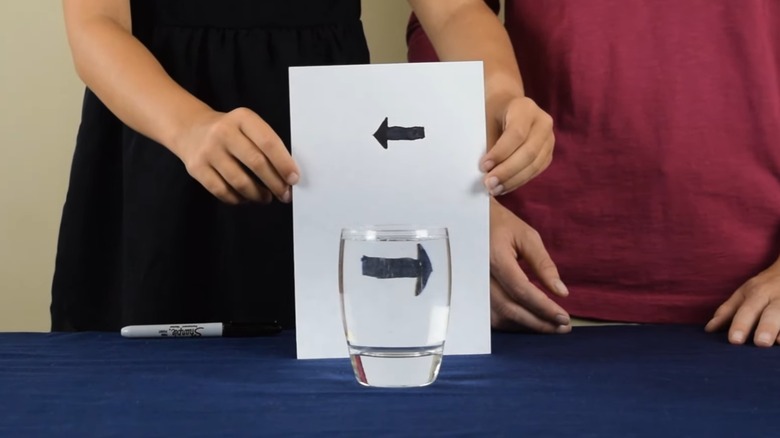Why Your Straw Looks Like It's Broken In Water
Have you ever put a straw in a glass of water and noticed that, while viewing it through the side of the glass, the straw looks like it's bent or broken? If you pull the straw out of the water, though, you can clearly see that it's just as straight as when you put it in. The reason it looks different is because of light refraction.
Rather than seeing objects themselves, we only see the light that reflects off of them. However, light doesn't always travel at the same speed. For instance, it travels faster through air than it does water, so when you look at objects on land, the light bouncing off them only has to pass through air to reach your eyes. When it passes through objects of varying densities, though, it changes speed and direction. In fact, light moves slower through glass than it does water, so when you look at a straw in a clear glass of water, the light bouncing off the straw slows down and refracts as it passes through the water and glass before it reaches your eyes. That's why the straw looks distorted where the water and air meet.
Light refraction is also how water magnifies things. If you look at the more submerged end of the straw, it will appear bigger than it actually is because of how the light is bending around it and the curvature of the glass. The same optical illusion is behind how magnifying glasses work.
Light refraction in water can also reverse images
You can put many different objects in a glass of water to see how light refraction makes them look bent or broken, such as pencils, a ruler, or kitchen utensils. It even works on larger objects, such as a skimmer in a pool. Light refraction activities can demonstrate the distortion as well.
For instance, fill a glass of water, and draw two arrows of the same size and pointing in the same direction on a piece of paper, one on top and one on the bottom with space in between. Then, slowly move the paper back and forth behind the glass, keeping the paper about 4 to 5 inches from the glass and the top arrow above the water level. If you start from the right side of the glass, the arrow will appear as though it's passing through the left side of the glass. That's because, as light passes through the water, it bends and crosses over itself as it emerges from the other side, making the image appear reversed.
The refraction of light will also make the arrow appear larger than it actually is, and you have the arrow at the top of the paper to view as a comparison. The more distance that you put between the paper and glass of water, the smaller the arrow will appear. If you bring the paper up against the glass of water, though, the arrow may not reverse but will still appear larger and slightly distorted. You can test out this same experiment with words on the paper to see how the words become reversed with light refraction.

